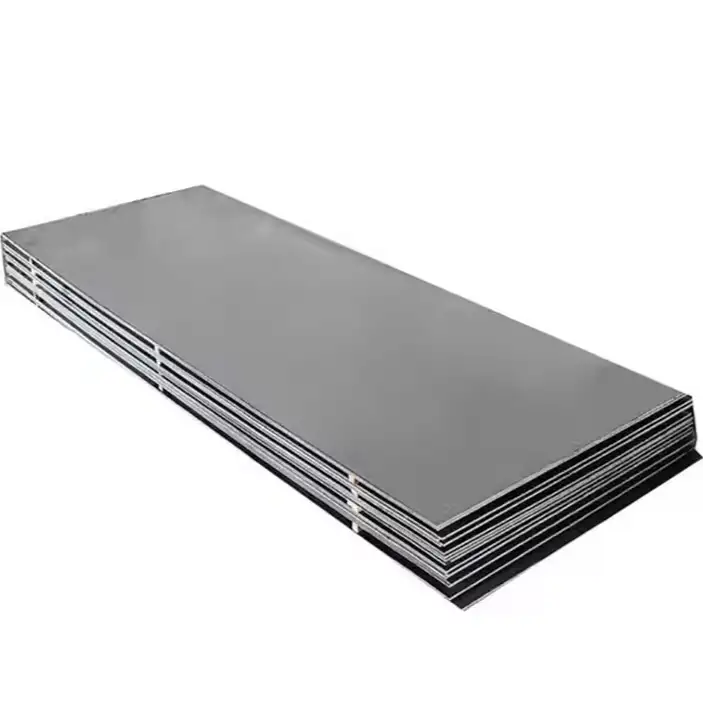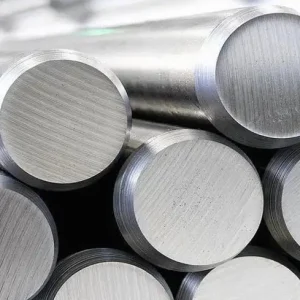AR450 is a through-hardened abrasion-resistant steel plate engineered to deliver a balance of high surface hardness (~430–480 HBW), good impact toughness and reasonable formability/weldability — making it the industry workhorse when moderate-to-heavy abrasive wear and occasional impact must be managed without the fabrication penalties of ultra-hard grades. For most mining, quarry, material-handling and heavy-equipment liners, AR450 gives the best trade-off between service life and fabrication cost; when maximum hardness (and reduced formability) is required, choose AR500/Hardox 500 alternatives.
What is AR450 steel plate?
AR450 (sometimes written AR-450 or AR 450) identifies a family of quenched & tempered, abrasion-resistant (AR) plates with a nominal surface hardness around 450 HBW (typical commercial ranges ~420–480 HBW). The “AR” label denotes “abrasion resistant”; the numeric suffix approximates the Brinell hardness. AR450 grades are manufactured to provide high surface wear resistance while keeping sufficient core toughness for impact service and preserving the ability to weld and form compared with harder grades. Manufacturer datasheets describe AR450 as “through-hardened” and optimized for balance between hardness, toughness and fabricability.
Typical chemical composition
Note: composition varies by mill / trade name. The table below shows typical target limits compiled from major mill datasheets and commercial suppliers (used for material selection and weld procedures).
| Element | Typical (wt.%) — AR450 (representative range) |
|---|---|
| Carbon (C) | 0.18 – 0.26 |
| Manganese (Mn) | 1.0 – 1.6 |
| Silicon (Si) | 0.20 – 0.60 |
| Chromium (Cr) | 0.30 – 0.80 |
| Molybdenum (Mo) | 0.20 – 0.65 |
| Nickel (Ni) | 0.25 – 1.0 |
| Boron (B) | 0.001 – 0.005 (micro-alloying) |
| Phosphorus (P) | ≤ 0.025 |
| Sulfur (S) | ≤ 0.010 |
Sources for these ranges include mill datasheets and common market specifications; mill chemistry is deliberately tight because the heat treatment and alloy mix control through-hardening and toughness. Typical published compositions for AR450F / AR450 show values in these windows.
Mechanical and material properties (typical values)
Property figures are typical targets — always request mill test reports (MTR) for project acceptance and quoting.
| Property | Typical AR450 (representative) |
|---|---|
| Surface hardness | 425 – 475 HBW (aim ≈ 450 HBW) |
| Tensile strength (UTS) | 1000 – 1400 MPa (varies by supplier & thickness) |
| Yield strength (0.2% offset) | ~900 – 1250 MPa (mill stated values vary) |
| Elongation (A50mm or A5) | 10 – 22% (thinner gauges tend to show higher elongation) |
| Charpy impact (where specified) | ≥ 20–40 J at room temperature; special “LE” grades guarantee −40 °C toughness |
| Hardness through thickness | Many AR450 products are > 90% through-hardened (depends on thickness) |
| Formability | Better than AR500; AR450F versions are produced specifically for formability/welding. |
Data consolidated from manufacturer datasheets (TruWEAR, DILLIDUR, Hardox product program) and commercial suppliers. Always verify heat treatment certificates and hardness maps for critical applications.
AR450 plate specifications, sizes and common tolerances
AR plates are sold under trade names and to mill product specifications rather than a single ASTM number. Typical stock and cut-to-length sizes (subject to mill program):
-
Thickness: commonly 3 mm up to 160 mm depending on mill and brand; common commercial stock: 4 mm, 6 mm, 8 mm, 10 mm, 12 mm, 20 mm, 25 mm, 30 mm, etc.
-
Widths: 1000 mm – 3000 mm (typical widths 1220 mm, 1500 mm, 2000 mm, 2500 mm).
-
Lengths: commonly 2000–12,000 mm (cut-to-size available).
-
Flatness / dimensional tolerances: many mills state ASTM A6 flatness tolerances (or half/quarter of ASTM A6 for premium flatness). TruWEAR declares thickness ±0.012" for some ranges.
Ordering tip: specify grade (AR450 / AR450F / NM450 / Hardox 450), required BHN acceptance limits, testing (hardness mapping, Charpy), and allowable machining or coating spec. For formed components, ask for “formable” variants (AR450F) or supplier guidance.
What is AR450 plate equivalent to?
Commercial equivalents and branded alternatives:
-
Hardox® 450 (SSAB) — global premium wear plate with guaranteed toughness and dimensional control.
-
DILLIDUR 450 (Dillinger / Germany) — mill datasheet for DILLIDUR 450 describes nominal 450 HBW delivery condition and good weldability.
-
NM450 / XAR 450 / EH450 (JFE) — widely used Chinese / Japanese equivalents (sometimes sold as NM450, JFE EH-C450).
-
TruWEAR / Wearalloy / Valast / Tensalloy 450 — mill/brand names used by large distributors.
Practical note: “AR450” is a hardness target, not a single chemistry standard. Equivalent brand grades are often interchangeable for wear performance, but tolerances, guaranteed through-hardness, impact values at low temperature, and mill testing protocols differ — always compare the mill certificates.
Typical manufacturing & heat-treatment route
AR450 plates are generally made by a quenched & tempered (Q+T) process: austenitize, quench (water or controlled cooling) and then temper to the target hardness and toughness. For thicker plates, mill process control produces high through-hardness profiles; some “F” variants (450F) are produced to retain improved formability/weldability by tailoring tempering and alloy balance. Mill test reports (MTRs) should be requested for hardness profile (surface vs mid-thickness), chemistry, and impact testing if the application requires it.
Common uses and sector examples
AR450 is extensively used where abrasive wear + intermittent impact occur:
-
Truck bodies and dump beds (aggregate, demolition).
-
Grinding and crushing equipment liners (mining, quarrying, cement).
-
Chutes, hoppers and conveyor wear parts.
-
Excavator buckets, cutting edges and frames where impact is significant.
-
Recycling, slag handling and abrasive slurry applications.
Advantages and limitations
Advantages
-
Superior abrasion resistance compared with AR400 and common structural steels — extends component life and reduces downtime.
-
Good compromise of hardness + formability/weldability vs AR500 — easier fabrication and lower risk of weld cracking.
-
Capability to reduce plate thickness for the same wear performance (weight savings).
Limitations / disadvantages
-
Not a structural plate replacement: hardness and brittleness in some conditions mean AR450 is not universally acceptable for structural load bearing; consult engineers.
-
Machining (grinding, milling) is more difficult; machining costs increase.
-
Higher purchase cost vs regular carbon plate; however lifecycle cost is usually lower in abrasive applications.
-
Welding requires qualified procedures and consumables sized for the alloy and preheat/post-heat as applicable.
-
Very hard grades (AR500/AR600) will outperform AR450 in extreme abrasion but are harder to form/weld.
AR450 vs AR500 steel
-
Hardness & abrasion: AR500 is harder (nominal ~500 HBW) → better wear life against sliding abrasion.
-
Fabrication & weldability: AR450 is easier to form and weld; AR500 is more prone to welding cracks and needs more controlled procedures.
-
Impact resistance: AR450 typically shows better impact toughness than commodity AR500; choose AR450 where impact + abrasion coexist.
-
Cost & weight: AR500 may provide longer wear life but may increase unit cost and fabrication difficulty; in many applications AR450 provides the best life-cost tradeoff.
-
Use case pick: buckets, conveyors, truck bodies → AR450; ballistic targets and extreme abrasion → AR500.
Sizes and quick weight table (metric)
Use the following to estimate weight: Mass (kg) = thickness (mm) × area (m²) × 7.85 (kg/dm³).
Example mass per square meter:
-
4 mm → 31.4 kg/m²
-
6 mm → 47.1 kg/m²
-
8 mm → 62.8 kg/m²
-
10 mm → 78.5 kg/m²
-
20 mm → 157.0 kg/m²
(7.85 is density of steel in g/cm³; multiply thickness in mm by area in m² to compute mass in kg.)
AR450 steel plate price 2025: USA, Europe, China
Pricing is volatile (spot & mill lead time sensitive). The table shows representative spot / supplier listing ranges observed across marketplaces and mill quotations in mid-2025. Use these as planning figures and request live quotes and CIF/FOB terms before awarding orders.
| Region | Representative 2025 range (USD / metric ton) | Notes & sources |
|---|---|---|
| China (domestic & export offers) | US$ 450 – 900 / t | China marketplace listings & supplier pages show broad ranges from budget bulk offers to branded premium plates (Alibaba / Made-in-China samples). Price varies strongly with thickness, coating, MOQ and brand. |
| USA (domestic & distributor stock) | US$ 800 – 1,400 / t | US plate benchmarks and distributor pricing data (Lee Costeel/IMARC/MEPS) put steel plate spot levels higher than commodity coil; premium AR grades command a markup. Use mill quotes for brand material (Hardox, Dillidur). |
| Europe (mill/branded & distributors) | US$ 900 – 1,600 / t | European branded mills (SSAB/Dillinger/JFE) are positioned at the premium end; delivery terms, taxes and logistics influence final landed cost. |
How to interpret ranges: entry-level commodity AR450 or non-branded NM450 from Chinese export mills will sit at the low end; branded guaranteed-toughness products from SSAB, Dillinger or JFE typically carry premiums and come with stricter testing & traceability.
Buying tips and fabrication checklist
-
Ask for Mill Test Report (MTR): chemistry, tensile curve, BHN map through thickness, impact (Charpy) values if required.
-
Specify target BHN acceptance window (e.g., 430–470 HBW) and whether hardness at mid-thickness is required.
-
Welding: use low-hydrogen consumables and qualified WPS; preheat/post-heat recommendations vary with thickness and carbon equivalent (CEV). For thin gauges, care on heat input and distortion.
-
Forming: order AR450F or discuss mill formable variants if you need bends. Avoid cold forming of high thickness without vendor approval.
-
Cutting: plasma/waterjet preferred; abrasive-cutting can be costly. Avoid heavy mechanical machining unless using tool steels and appropriate feeds.
-
Coatings & corrosion: AR is not stainless — protect against corrosion if environment demands (paint, PE/EP coating, galvanizing where applicable).
-
Handling & QC: inspect for surface decarburization, heat-affected zones after welding, and verify supplier traceability (lot number, heat number).
FAQs
-
Q: Is AR450 weldable?
A: Yes. AR450 is generally weldable but requires qualified procedures; AR450F variants are produced specifically for improved weldability. Check MTR and follow supplier preheat/post-heat guidance. -
Q: Can I drill or machine AR450?
A: Machining is possible but abrasive and tool wear is high. Use carbide tooling, slow feeds and expect elevated tool costs. -
Q: Is AR450 suitable for high-impact service?
A: It balances abrasion resistance with impact toughness better than higher hardness grades; for extreme impact combined with abrasion, inspect impact-spec’d grades (LE/-40 °C tested). -
Q: How does thickness affect hardness?
A: Thickness affects the ability to obtain through-hardness; mills publish maximum thickness for guaranteed BHN profiles — request hardness maps. -
Q: Does AR450 replace structural steel?
A: Not automatically. AR450 is engineered for wear; structural design requires specific yield/toughness assurances and approvals. -
Q: Which is better for truck beds: AR450 or AR500?
A: AR450 is often preferred because it is less prone to cracking and easier to weld/form; AR500 may provide longer wear life but is harder to fabricate. -
Q: Can AR450 be formed cold?
A: Small radii and light forming are possible on AR450F; heavy bending of thick plates risks cracking — consult mill. -
Q: How long will AR450 last?
A: Service life depends on the abrasion mechanism and operating profile; lifecycle cost is almost always the best metric (AR450 often reduces downtime vs mild steel). -
Q: Are there low-temperature AR450 grades?
A: Yes, some brands offer “LE” or low-temperature variants with guaranteed impact at −40 °C (check JFE/SSAB offerings). -
Q: What inspection tests should I require?
A: Hardness (surface and mid-thickness), chemical analysis, tensile test, Charpy impact if warranted, and non-destructive examination (NDE) for critical welds/parts.
About MWAlloys Supplier
MWAlloys supplies industrial steel plate including AR450, AR450F and branded equivalents with full material traceability. Our strengths:
-
100% factory direct pricing—competitive CIF and FOB options for global buyers.
-
Stocked inventory for common sizes with fast dispatch for standard gauges.
-
Technical support: we provide MTRs, welding recommendations and on-demand hardness testing.
If you’d like, I can prepare a tailored quotation for the exact thicknesses and quantities you need (including EXW/FOB/CIF options and lead times) — provide thickness, quantity (tons or pieces), and target delivery port.





